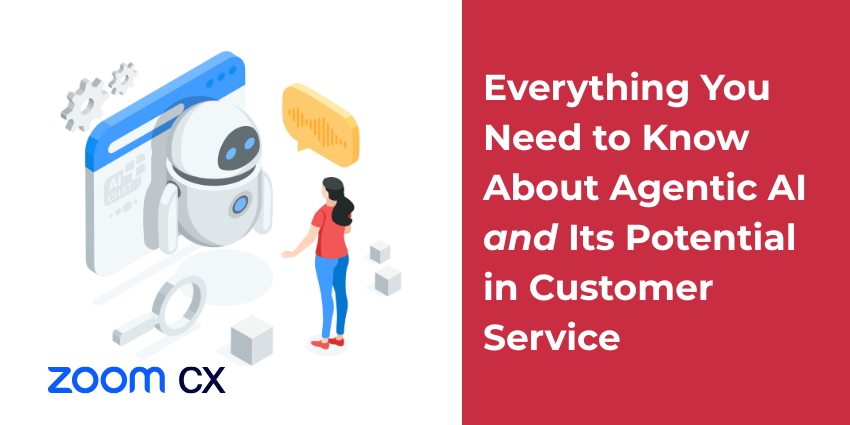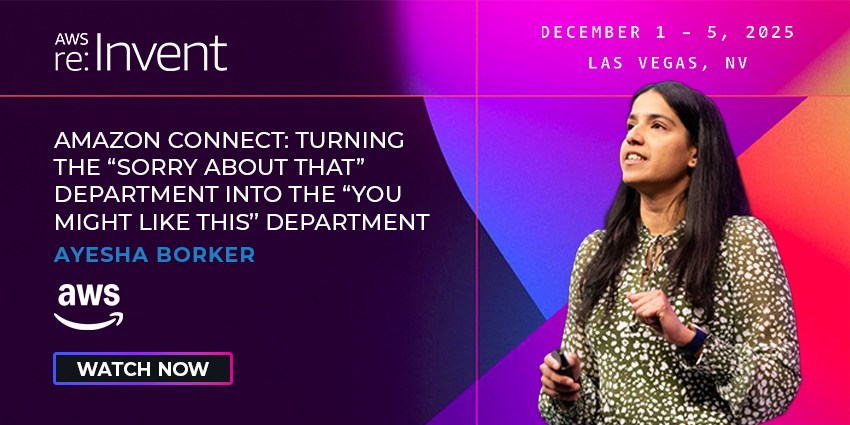According to Gartner, agentic AI will automate 80 percent of customer service queries by 2028.
Additionally, the analyst predicts that it will reduce costs by 30 percent.
Summarizing these findings, Daniel O’Sullivan, Senior Director and Analyst in the Gartner Customer Service & Support Practice, said:
“Agentic AI has emerged as a game-changer for customer service, paving the way for autonomous and low-effort customer experiences.”
However, vendor definitions of agentic AI vary, causing confusion around the implications of the technology in the contact center. That’s a problem.
As such, let’s consider a definitive definition and, from there, the technology’s true potential across the contact center space beyond conversation automation alone.
What Is Agentic AI?
Agentic AI is not a new-fangled term for a contact center chatbot or virtual agent.
Instead, agentic AI represents a new category of technology.
An “AI agent” can ingest communications and data, understand the context and reason to make decisions, adapt, and automate. It learns from every interaction to take autonomous action with minimal human involvement.
Various departments across the enterprise may deploy AI agents to automate specific processes.
Think beyond customer service for a moment. Marketing teams could deploy AI agents that interpret successful past projects to generate new campaign briefs, create relevant audience segments, and build much of the campaign themselves.
Now, think about commerce. Brands could deploy AI agents on their websites as personal shoppers to listen to customer needs and deliver personalized recommendations.
There are many more possibilities spanning different functions. But, the bottom line is: this is not purely a customer service technology; it’s enterprise-wide.
That said, there are many fascinating agentic AI use cases in customer service beyond conversation automation alone.
How Will Agentic AI Transform Customer Service?
The most common use case for AI agents in the contact center is as a replacement for previous-generation chatbots.
These required the developer to predefine the types of conversations the bot would likely encounter and instruct the AI on what tasks to perform based on those categories.
The rigidity of these applications meant that the interaction broke down when customers said anything unexpected.
Thankfully, agentic AI has changed that. As Ram Rajagopalan, Head of AI Product at Zoom CX, said: “We’re moving away from scripted, intent-based models and replacing them with a system based on skills and prompts.
“Instead of programming exact decision trees, you can set broad objectives and allow the AI to reason, adapt, and act autonomously based on real-time context.”
Ultimately, that enables more nuanced conversations, with AI agents sifting through knowledge bases and data sets to answer customer queries.
These AI agents may also reason about how sure they are of surfacing the correct answer and escalate when they are not certain. That’s a critical guardrail within a powerful agentic AI use case.
Alongside transforming virtual agents, there are many other use cases, which Ram highlighted, including AI agents that deliver proactive customer service.
Here, an AI agent can detect signals from systems that indicate a customer issue. They may then fix the problem and communicate their actions with the customer.
Consider a telco company. Let’s say it has a network outage. An AI agent could spot this, check the CRM to isolate impacted customers, and proactively warn them of the issue before they call in. The agent can then offer updates until the system is restored.
Other possible examples of AI agents in customer service include those that automate post-contact processes, simulate conversations for training, and generate new knowledge content.
Yet, businesses won’t necessarily have to configure these AI agents themselves. Over time, CCaaS providers will embed preconfigured agents into their applications, making it much easier for enterprises to realize their benefits.
Contact centers may, however, start noticing customers using AI agents to reach out to them.
In the future, these may live on smartphones, with consumers asking Bixby, Google Assistant, or Siri to contact customer support for them. Even more spooky, they may take outbound calls on their behalf…
Is My Contact Center Ready for Agentic AI?
Agentic AI is a transformative technology. Yet, vendors are still building out their strategies, use cases, and pricing models. As such, contact centers are advised to, at first, take a cautious approach.
Indeed, Ram recommends taking a step back. He said:
“Don’t start with the question, ‘Where can I use agentic AI?’ Start with, ‘Where are the pain points in my customer experience?’”
While AI agents may play a key role in solving many of those problems, platforms like Zoom CX extend further, using AI across the service experience to address the most pressing challenges contact centers face today.
“If you have high agent churn, maybe focus on agent assist tools to support your team better,” continued Ram.
“If you have high call volume and limited live agent availability, invest in virtual agents to provide 24/7 support.”
Ram’s approach allows contact centers to keep innovating as the AI agents that drive the most value in customer service start to come to the fore.
That’s critical, as many customer service leaders are under pressure to invest in AI, and the most savvy recognize that now is the time to do so.
After all, the total cost of ownership (TCO) for AI solutions is dropping, large language models (LLMs) are becoming more accurate and manageable, and customer expectations have dramatically shifted as everyone’s gotten used to the efficiency of tools like ChatGPT.
That doesn’t mean chasing the next big technology. Instead, work with a trusted CX provider that removes complexity and offers consumer-grade technology. That way, when the big breakthroughs occur, they’re accessible.
The bottom line: implementing AI should never feel like climbing a mountain.

What’s Zoom’s Approach to Agentic AI in the Contact Center?
Zoom is embracing agentic AI across the enterprise. The contact center will be a critical area of focus for the enterprise communications stalwart.
The Zoom Virtual Agent is already delivering impressive results. Across its own contact centers, the enterprise communications giant is automating 97 percent of its online customer queries.
In May 2025, the Virtual Agent went agentic, bringing advanced AI capabilities to every customer interaction.
According to Ram, “This is just the beginning,” as Zoom also considers how AI agents can assist live agents and supervisors in their day-to-day work.
Nevertheless, Zoom doesn’t want to burden its contact center customers with building and orchestrating AI agents. It wants to deliver value faster.
“We also handle the orchestration behind the scenes, selecting the right large language model for the task,” said Ram.
“Some cases require small, efficient models (like for summarization), while others need high-accuracy models (like real-time voice).
“Customers don’t need to manage this complexity.”
“The value we bring is in handling the full conversation—start to finish—across bots and human agents and feeding that data back into the system to improve performance,” he concluded.
Those bots are simpler than ever to deploy, as developers no longer need to manually hard-code intents, design dialog trees, etc.
For more on Zoom’s approach to agentic AI and its CX portfolio, visit zoom.com








